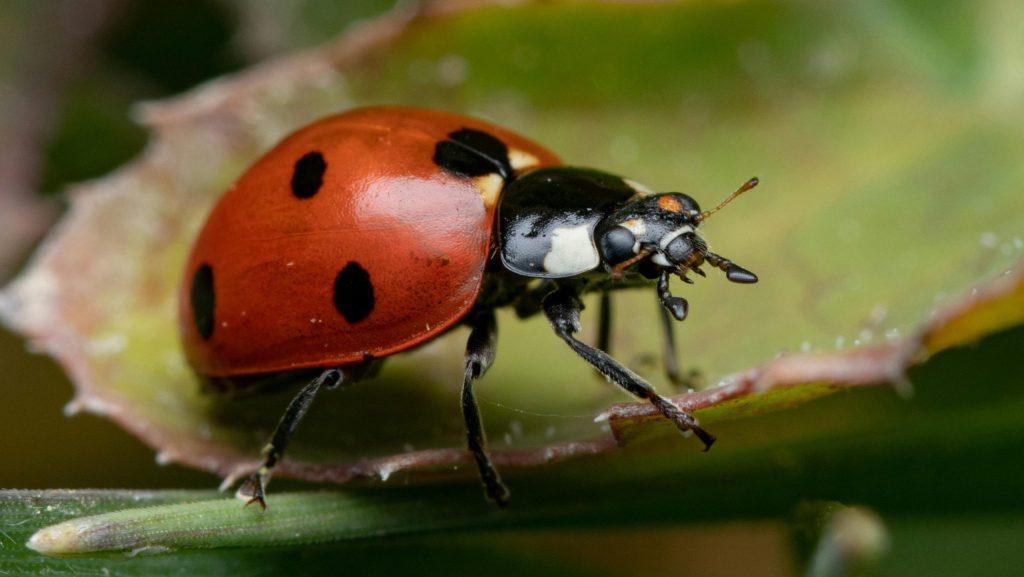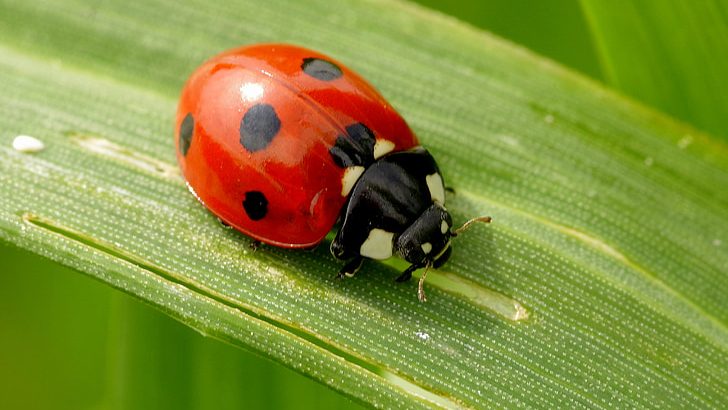Key Takeaways
- Ladybugs are helpful garden insects, while Asian lady beetles can bite, emit foul odors, and invade homes in large numbers.
- Asian lady beetles are recognizable by a black “M” marking behind their heads and irregular spots.
- Asian lady beetles cluster indoors and release irritating secretions; ladybugs rarely do and are harmless.
- Manage Asian beetle infestations with vacuuming, sticky traps, and professional pest control if needed.
- Knowing the difference between species helps determine if and when expert help is required.

How to Identify Ladybugs and Asian Lady Beetles
When spotting a beetle in your home or garden, it’s important to know what to look for. Observing their physical characteristics and behavior can help you tell them apart. Start by examining their appearance. Look for the distinct “M” marking on the heads of Asian lady beetles. If the spots on their shells are uneven or missing, it’s likely an Asian beetle. On the other hand, ladybugs will have uniform black spots on their bright red or orange shells. Behavior is another key identifier. Asian lady beetles tend to cluster in large groups, especially indoors during colder months. They gather near windows, ceilings, or light fixtures, while ladybugs are more solitary and remain outdoors. If you notice beetles in your home releasing a yellow liquid, they are likely Asian lady beetles. Get professional help to eliminate these invasive pests safely and efficiently.What Are Ladybugs?
Ladybugs are widely regarded as beneficial insects. Their bright, vibrant colors and harmless nature make them a favorite among gardeners and nature enthusiasts. Ladybugs are small and typically measure between 0.3 to 0.4 inches. Their round, dome-shaped bodies are bright red or orange with evenly distributed black spots. Unlike their Asian lady beetle counterparts, they lack any distinct markings on their heads or thoraxes. These features make them relatively easy to identify when compared to other insects.

Not getting a solution?
Get your free pest control estimate today!What Are Asian Lady Beetles?
Asian lady beetles, also known as Japanese ladybugs, share a similar appearance with ladybugs but differ in several important ways. If you’re unsure which insect you’re dealing with, a pest control expert will help identify and address the issue. Asian lady beetles are slightly bigger than ladybugs, measuring between 0.3 to 0.5 inches. Their color ranges from pale orange to deep red, and they may have irregular or even absent spots on their shells. A key identifying feature is the black “M”-shaped marking located on the whitish area behind their heads. This marking is a reliable way to distinguish them from ladybugs. In terms of behavior, Asian lady beetles can be more aggressive. They are known to bite, though their bites are harmless and cause only minor irritation. When threatened, they release a yellow, foul-smelling liquid that can stain walls and furniture. If these insects are becoming a nuisance in your home, call now to get rid of an Asian lady beetle infestation before it worsens.
Key Differences Between Ladybugs and Asian Lady Beetles
Here’s a comparison table to quickly differentiate between ladybugs and Asian lady beetles:| Feature | Ladybugs | Asian Lady Beetles |
|---|---|---|
| Size | Smaller, around 0.3–0.4 inches | Slightly larger, around 0.3–0.5 inches |
| Color | Bright red or orange shell | Varies from pale orange to deep red |
| Spots | Uniform black spots | Irregular spots or no spots |
| Markings | No distinct markings | Black “M”-shaped marking on the thorax |
| Behavior | Non-aggressive, harmless to humans | Can bite and release a foul-smelling liquid |
| Habitat | Primarily outdoor insects | Frequently invade homes in cooler months |
| Diet | Feed on pests like aphids, benefiting plants | Feed on pests but can also damage ripened fruit |
| Clustering | Rarely seen clustering indoors | Tend to gather in groups indoors |
How to Manage Asian Lady Beetles
If you’re dealing with an Asian beetle infestation, taking quick action is crucial. These insects can stain surfaces and irritate residents. Consider these strategies to protect your home:Ladybug Control Tips
-
Vacuuming: Use a vacuum cleaner to remove beetles without crushing them, which could release their foul-smelling liquid.
-
Sticky traps: Place traps in areas where beetles are frequently seen, such as near windows or in attics.
-
Professional pest control: For severe infestations, contact professional ladybug control services to schedule a consultation and protect your home.





